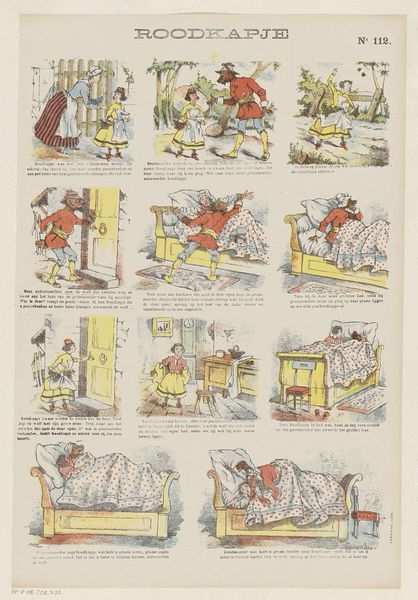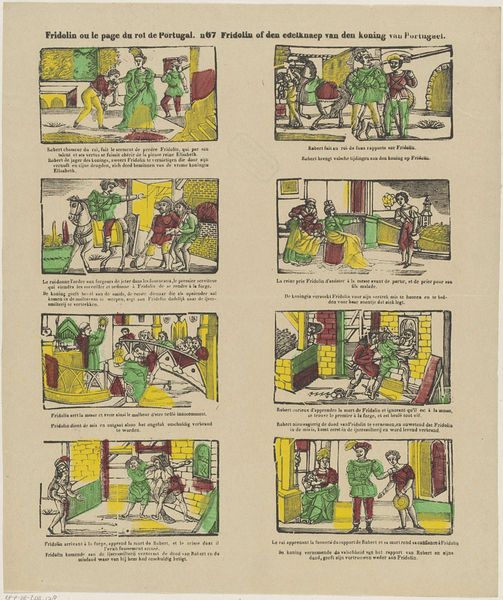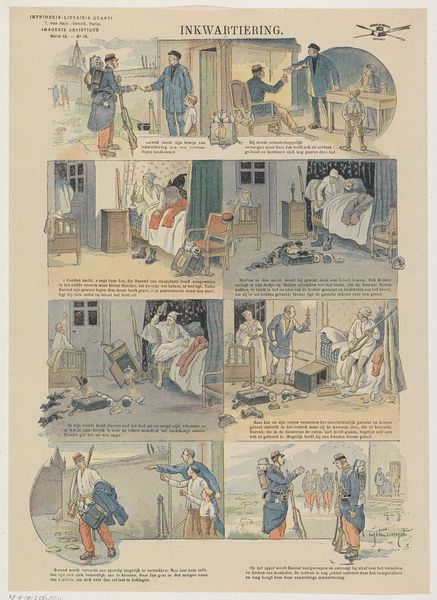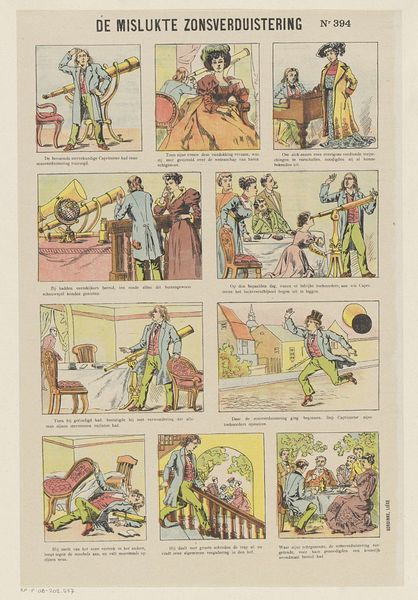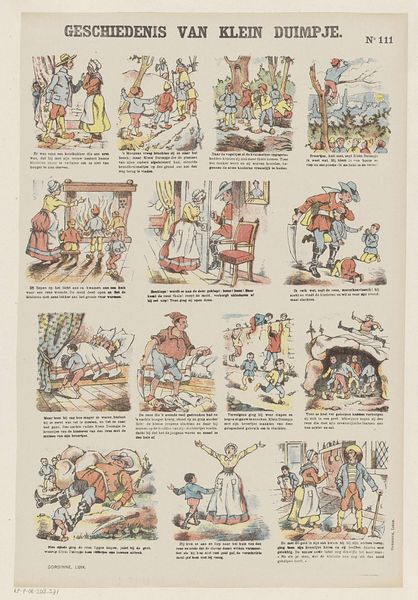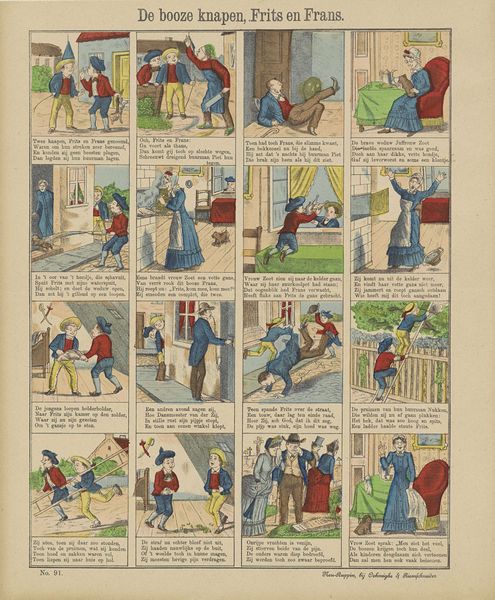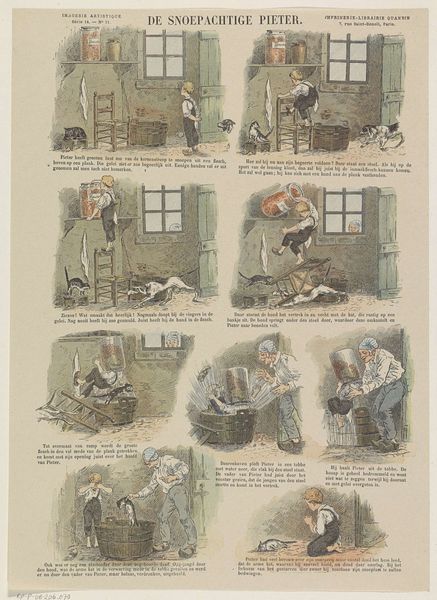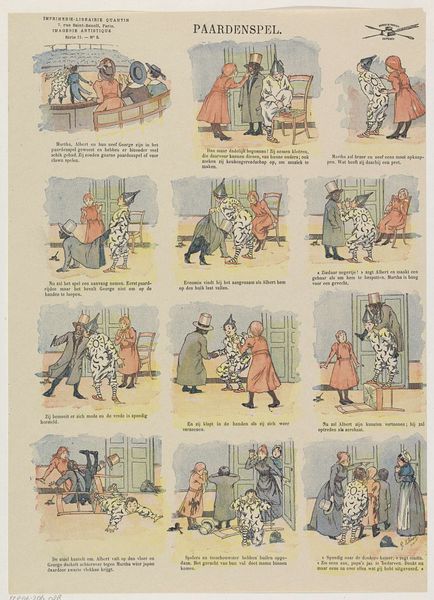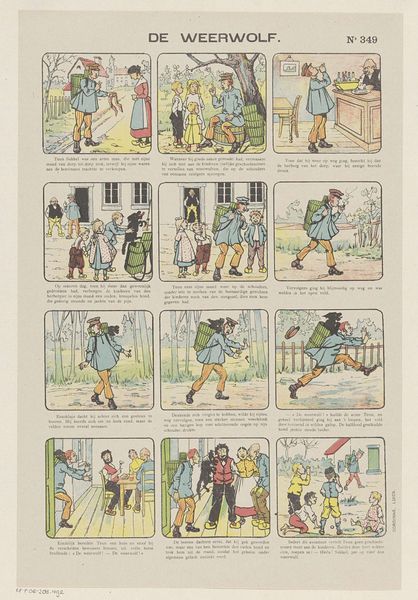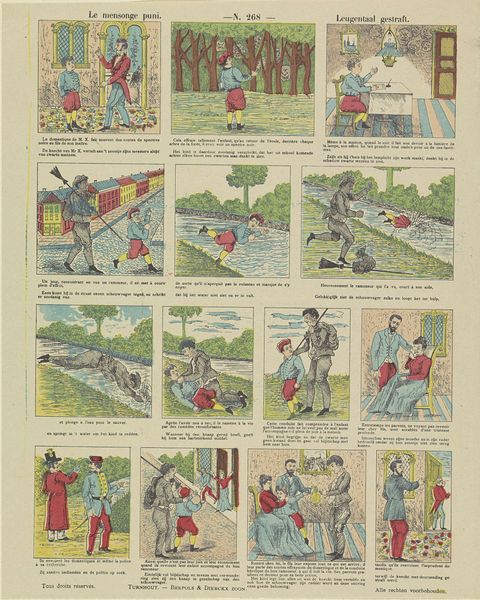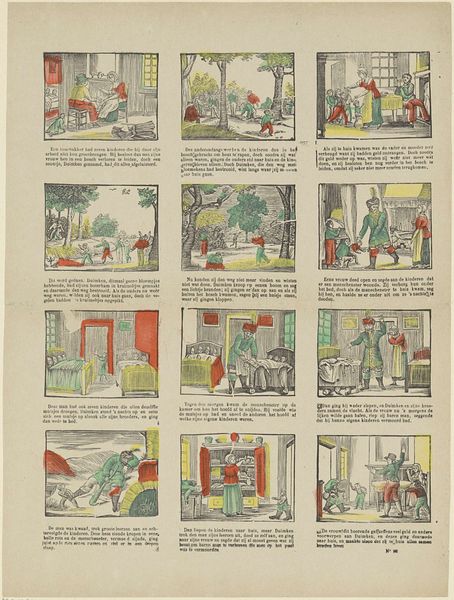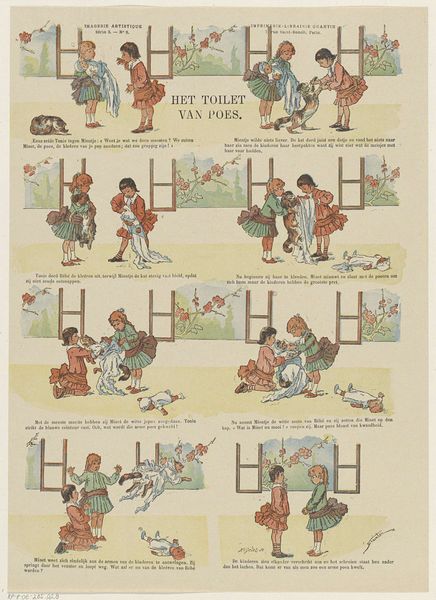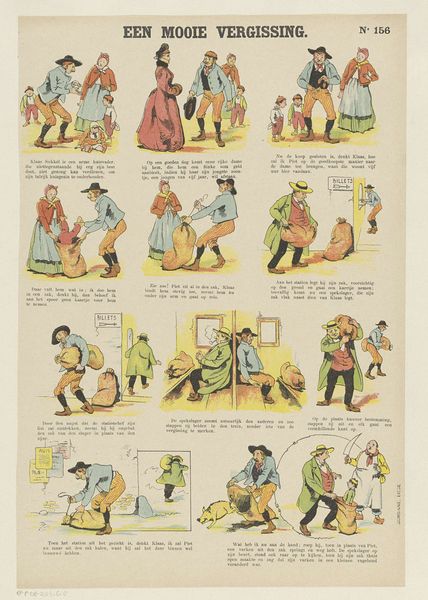
Dimensions: height 368 mm, width 265 mm
Copyright: Rijks Museum: Open Domain
Curator: Editor: This is "Een flink stortbad," or "A Good Showering," by J. Beuzon, made sometime between 1876 and 1891. It's a narrative print, an etching. It feels a bit like a comic strip telling a single story. What do you see in this piece, especially within the historical context of its creation? Curator: It’s tempting to dismiss this as simple genre painting. But think about the social dynamics on display. The "good showering," clearly a prank, speaks volumes about power and privilege. Who is inflicting this discomfort, and upon whom? And what does that say about the rigid class structures and the anxieties of the time? Look closely—does the target of the prank hold any position of authority? Editor: I hadn't really considered the class implications. They seem like mischievous boys, perhaps aiming upwards in status by pranking someone. Curator: Exactly. And how might this “mischief” serve as a form of resistance, however fleeting? Could it be interpreted as a carnivalesque inversion of social hierarchies, where the marginalized briefly assert control? Do you think the artist is making a judgement? Is it pro or against, or more ambivalent? Editor: That's a very different way to look at it than just seeing it as slapstick humor. Perhaps it's highlighting social tensions of the late 19th century through this narrative. It gives another perspective. Curator: Indeed. Examining art through an intersectional lens—considering class, gender, and historical context—allows us to move beyond surface-level readings and uncover deeper socio-political meanings. It helps to understand the artist's context. Editor: I agree. Looking at art in this context makes me look beyond my first impression of art. Thanks.
Comments
No comments
Be the first to comment and join the conversation on the ultimate creative platform.
